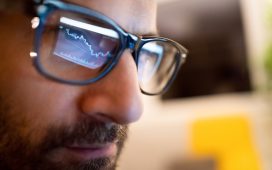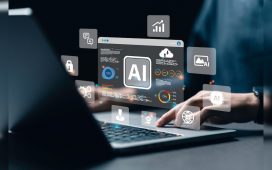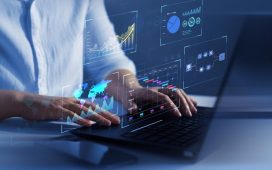Artificial intelligence (AI) has transformed a number of industries, and high-level sports is no exception. In recent years, AI has become an indispensable tool for monitoring and assessing athletes’ performance, optimising tactical strategies and improving health and safety.
This development has also, however, led to growing debate over the handling and use of data collected by AI systems, leading athletes’ associations and unions to mobilise to protect their rights, given the potential abuse of these technologies.
Some elite sportspeople have taken a lead role in identifying strategies to ensure the application of principles such as privacy, transparency, explainability, non-discrimination, the ethical use of algorithmic management systems for monitoring and evaluating athletes’ performance and respect for their rights in the digital age.
Throughout history, high-level sports have been a laboratory for the implementation of cutting-edge technologies that have subsequently been applied in other spaces and environments, including for other purposes. Meanwhile, sportspeople, as workers, have long adopted relevant and emblematic positions on the issues of the day. Their capacity to influence children and adolescents makes them noteworthy examples in debates on issues that transcend their victories and defeats on the sports field.
AI in sports performance monitoring and assessment
The use of AI in sport has contributed to significant advances in performance, at the same time as ensuring athletes’ health and safety. Predictive analytics systems generate alerts about possible muscle injury and wear and tear.
The technologies are used in team and individual sports to analyse large volumes of data collected during training and competitions. This includes biometric data, movement records, game patterns and performance metrics, which are processed to provide real-time feedback and enable tactical adjustments.
One example is the use of sensors and high-speed cameras in football to monitor the positions and movements of players on the pitch.
This data is analysed by algorithms that can predict patterns of play, identify weaknesses in the opponent and suggest strategies to maximise the chances of winning. Similarly, in sports such as athletics and cycling, AI is used to analyse athletes’ biomechanics, to optimise their technique and minimise the risk of injury.
Tools such as GPS tracking systems and heart rate monitoring devices are also used in endurance sports. These devices collect real-time information that is processed by AI systems to adjust training intensity and ensure that athletes stay within safe exertion parameters, avoiding overtraining and reducing the risk of serious injury.
Football: tactical analysis and injury prevention
In football, the use of artificial intelligence has become an essential tool for coaches. English football club Manchester City, for example, uses the Slants tool to analyse, in real time, each player’s position, their speed, distance travelled and physical effort. This information is used not only to design tactical strategies but also to prevent injuries by monitoring the players’ workload and muscle fatigue.
Already during the 2014 World Cup, the German national team used data analytics to examine their opponents’ patterns of play and optimise their own tactics. This data-driven approach contributed to the team’s success in winning the tournament, highlighting how technology can directly impact on competitive performance.
Today, the Catapult system is widely used in European and South American teams, collecting acceleration, speed and heart rate data to help coaches adjust training to individual players’ needs.
As for privacy, players and unions have expressed concern about how this data is handled, arguing that it could be used against them in future contract negotiations.
Tennis, rugby, boxing, baseball and cricket: performance and health
Tennis is among the sports that has adopted AI to improve performance. The IBM Watson tool, used in tournaments such as Wimbledon, analyses a wide range of data to provide processed information on players’ performance.
In sports such as rugby and boxing, where the risk of concussion is high, AI has been used to develop monitoring systems that detect impacts and automatically assess their severity.
These systems help with quick decision making about the need to remove a player from the game to prevent serious damage. Similarly, in baseball, AI is used to monitor pitcher fatigue, helping prevent arm injuries that could have long-term consequences for the player’s career.
AI has also been used in the design of personalised training programmes that consider the individual fitness, injury history and specific goals of each athlete. This not only improves performance, but also reduces the risk of overtraining and stress-related injuries.
In cricket, AI has already been deployed for in-game decision making and player health monitoring. Tools such as Hawk-Eye are used to review umpiring decisions, while health monitoring systems such as sleep and recovery analysis devices allow coaches to adjust training and rest schedules to maximise performance and minimise the risk of injury.
The use of this data has also raised privacy issues, especially in leagues such as the Indian Premier League (IPL), where players have voiced concern about the handling of their biometric data. Players’ associations are seeking greater assurances that this data will not be used to their detriment, especially with regard to salary negotiations and job security.
Athletes’ response: privacy and rights in the digital age
Access to large amounts of personal information has sparked debate about privacy and data ownership. Athletes’ unions and associations have played a key role in defending their rights, demanding clear limits on how data is collected, stored and used.
A high-profile example of such mobilisation is the action taken by the National Basketball Players Association (NBPA) in the NBA. In 2017, players successfully negotiated limits on the use of data collected by monitoring devices in pay and contract negotiations. Almost all NBA clubs use the system implemented by the company Kinexon to monitor the performance of athletes.
The players argued that information about their health and performance could be used against them during negotiations, which could affect their future earnings and opportunities. It was agreed that certain sensitive data would not be used in contract negotiations, protecting the athletes’ rights and privacy.
The NBA’s collective bargaining agreement, moreover, expressly states that the data collected can only be used for tactical and health purposes, with the monitoring of a bipartite commission of data and sports health specialists who jointly decide on the implementation of technologies and the handling of data obtained through sensors attached to athletes’ clothing.
The US women’s basketball league has recently affiliated with the AFL-CIO, which has entered into a landmark agreement with Microsoft to ensure worker participation in the design, programming, testing and monitoring of artificial intelligence tools applied to the workplace.
Like the NBA, American Football League (NFL) players have also raised concerns about the use of biometric data, such as exertion levels and potential injuries, in selection decisions and salary negotiations. The players have demanded that strict policies be adopted to ensure this data is only used with their consent and that measures be put in place to prevent its misuse.
Clauses similar to those found in the NBA players’ agreement have been identified in collective bargaining in other fields of work, demonstrating the power of high-performance sports to influence the defence of workers’ rights.
Mobilisation among sportspeople to guarantee their rights
The growing ability of AI to monitor every aspect of sporting performance has led athletes to mobilise to ensure their rights are respected in this new digital age. One of their main focuses has been the call for transparency in the use of data. Athletes are demanding access to the data collected about them and clear information about how the data will be used. Some leagues have responded with policies that allow athletes to review their data and object to its use in certain circumstances.
Another key issue has been the fight against algorithmic discrimination. Sportspeople have expressed concern that AI systems could perpetuate existing biases, such as racial or gender discrimination, if not properly designed.
Athletes and their associations have therefore called for the implementation of transparent and fair algorithms that do not discriminate on the basis of personal characteristics with no relevance to sporting performance.
Their mobilisation around the ethical use of artificial intelligence and the protection of their labour rights can serve as inspiration for workers in other professions.
The ability of athletes to organise and bargain collectively in defence of privacy, transparency and non-discrimination in response to algorithmic management systems demonstrates the importance of collective action in the digital age.
This kind of mobilisation not only strengthens their rights as workers but also gives visibility to the need to design and apply technologies ethically, in all fields of work.
By ensuring that decisions on the use of AI and biometric data are transparent and fair, top athletes are paving the way for other professions to address the impacts of these technologies on their working conditions.
This reinforces the relevance of workers’ associations and unions in different sectors taking proactive positions on the protection of rights in response to the automated processing and use of personal data in the work environment.
This article has been translated from Spanish.











